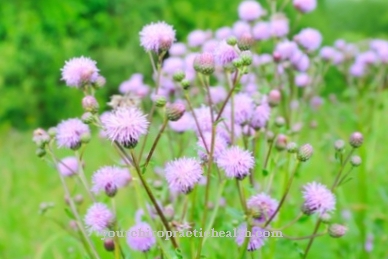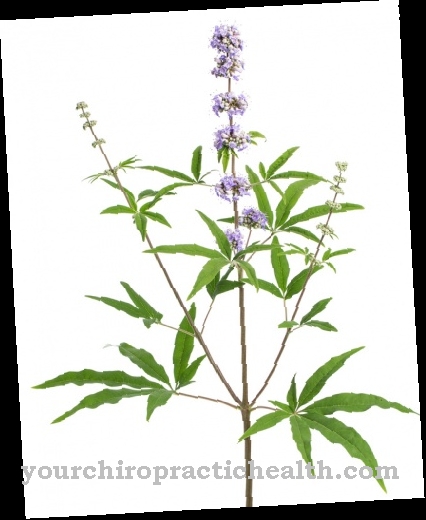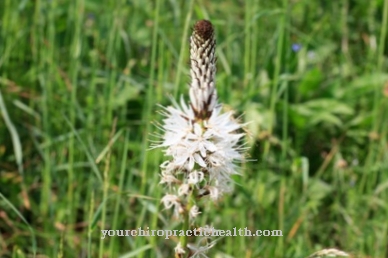Occurrence and cultivation of the Alexandrian Senna

The Alexandrian Senna is a shrub and reaches a height of 0.5 to 1.5 meters. The leaves are smooth and pinnate, their flowers are arranged in racemose inflorescences and are zygomorphic. The petals are yellow in color. In addition, the Alexandrian Senna bears brown fruits that are up to four centimeters long.
The plant is found mainly in southern Algeria, Egypt, and northern and tropical Africa. It can also be found in Yemen and Saudi Arabia. Other homeland areas are in eastern Pakistan, south India and south-west Jordan. In the past, the plant was brought from the Nile to Alexandria, from where it was then shipped on to Europe. For this reason it is also called Alexandrian Senna. In the 19th century, Egypt even had a monopoly on the Senna trade.
Its medicinal effect was first documented in the 8th century, with senna being mainly used for stomach diseases, leprosy and eye ailments until the Middle Ages. From the 16th century it was also used as a laxative.
Paracelus, for example, used the leaves of the plant together with wormwood and leek as a laxative and the Count of Saint German also propagated the Alexandrian Senna as a remedy. In Burkina Faso, medicine men use the plant for stomach problems. For this, the root of the senna is crushed and then mixed with honey. Today the dried pods and the dried leaves are mainly used, with the drugs mainly coming from India or Sudan.
Effect & application
The Alexandrian Senna contains antraquinones, sennosides and mucilage. Hydroxyanthracenoycosides are also found in the fruits of the plant. Sennosides are natural prodrugs whose beta-glycosidic bond is not broken down by digestive enzymes. Therefore, the anthraquinone glycosides reach the colon or rectum unchanged. With the help of beta-glycosidases, aglycones are then released, which subsequently oxidize to form anthrones.
Anthrones increase the secretion of fluid, stimulate intestinal peristalsis and inhibit fluid absorption. This can enlarge the intestinal contents and trigger the defecation reflex. In addition, there is an increase in the release of chloride, so that more electrolytes (magnesium, potassium) and water reach the intestine. This also removes nutrients from the body, which is why Senna should only be used for a short period of time.
The Alexandrian Senna is mainly used for constipation, whereby the fruit drug has a milder effect here. The plant can also be used to defecate before examinations or for anal fissures or hemorrhoids to make the stool softer again. Senna is contraindicated in cases of intestinal obstruction, during pregnancy and in children under twelve years of age.
Since the anthracene derivatives can get into breast milk, use during breastfeeding is not recommended. In addition, Senna must not be taken in inflammatory bowel diseases such as ulcerative colitis, Crohn's disease or appendicitis or in the case of severe dehydration. A doctor should also be consulted if saluretics, licorice root or cortisone or cortisone-like substances are ingested.
In order to be able to prevent a possible potassium deficiency, the senna should not be used for longer than one to two weeks. In addition, it is not advisable to take the plant in conjunction with cardiac glycosides, as this leads to a potentiating effect. In the event of overdosing, vomiting, abdominal pain, damage to the intestinal nerves and protein in the urine can occur.
Importance for health, treatment & prevention
The leaves and fruits of the senna are used to soften the stool so that it can be gently emptied. Over a period of one to two weeks, it is also suitable as a laxative for constipated stool or for gentle emptying of hemorrhoids, anal fissures or after operations. The leaves and fruits of the plant are also extremely popular in self-medication and are part of many commercially available preparations.
The active ingredients are also very often supplied in the form of tea. For this, the drug is poured with hot water and has to sit for ten to twenty minutes before it is poured off. It is also possible to produce a cold pull-out. In this case, the leaves are set with cold water and have to steep for twelve hours. Then they are strained and the tea is warmed up. If the effect is too strong, only half or three quarters of a cup of the tea should be drunk.
If the fruits of the plant are used, it is possible to shorten the drawing time, as the active ingredients are released from the fruits more quickly. The Alexandrian Senna can also be combined with caraway or buckthorn bark for a tea. When the medicine starts to work, stomach cramps may occur and in some cases the urine may be reddish brown in color.
If senna is taken for a long time, constipation occurs. In addition, the electrolyte and water balance can get out of balance, which can lead to cardiac arrhythmias. In addition, the intestinal mucosa can turn dark due to pigment deposits. This discoloration is usually harmless and disappears when the senna preparation is no longer taken.
























.jpg)



